Sejahteralah ke atas kamu...
Entry aku yang sebelum ni berkenaan Sekolah Tadika Yang Menyeksakan tu mendapat maklumbalas daripada pembaca yang rata-ratanya tidak mahu menghantar anak mereka ke sekolah tadika tersebut. Memang tak mungkin dapat hantar pun sebab sekolah tadika begitu hanya ada di Jepun. Ye Jepun. Negara yang rakyatnya terkenal dengan budi bahasa dan disiplin yang tinggi.
Aku sebenarnya mencari, di mana hebatnya pendidikan negara Jepun sampai bangsa Jepun jadi begitu hebat. Bagi aku sangat hebat sebab mereka langsung tak bergantung kepada Barat untuk maju, mereka tak pandai berbahasa Inggeris pun, negara mereka hancur teruk selepas pengeboman di Hisroshima, negara mereka juga tiada sumber asli. Yang mereka ada hanya teknologi yang mereka jual. Mereka maju. Dalam masa yang sama attitude mereka kelas pertama. Maka aku menggali. Bagaimana cara mereka beri didikan kepada anak-anak mereka. Apa yang sekolah mereka ajar. Sehinggakan nilai2 murni 'mengikut' mereka sehingga mereka tua. Ternyata.... bukan satu tugas yang remeh.
Beberapa isi penting yang aku kongsi dalam entry aku sebelum ni, ialah diantara 12 perkara yang amat mengkagumkan seorang ibu berbangsa China yang menghantar anak beliau bersekolah tadika di Jepun. Semuanya seperti kejutan budaya untuk beliau. Namun akhir sekali beliau sedar semua peraturan yang ditetapkan itu hanya untuk mendidik anak supaya menjadi lebih kuat dan berdisplin.
Sesiapa nak baca, boleh baca dan berasa kagum seperti aku; Artikel ini aku ambil daripada China Smack
Nama anak dia TianTian. Yang no 12 tu kalau nak implement kat Malaysia, mungkin boleh tukar lawatan ke masjid ke. Tapi.... Rasanya kalau tadika kat Malaysia buat macam ni, memang takde mak ayah yang nak hantar anak ke situ. Ataupun kalau ada, nanti tadika tu pulak yang disaman sebab mendera kanak-kanak. Aku, kalo yang no 1 tu aku memang suka. Boleh menjahit beg. Hehe.
12 things about Japanese kindergarten [preschool?] that have stunned me as a Chinese mother
Before coming to Japan, Tiantian
had already gone through a year of kindergarten [preschool? nursery
school?] in Beijing, so you could say that we are no strangers to
kindergarten. But there are some things in Japanese kindergartens that
have stunned me [are really weird/strong]. Let me share them with you.
1. The Ridiculous Number of Bags.
On the first day, they explained to us that we needed to prepare a certain number of bags of various sizes:
A schoolbag, a blanket bag, a bag
for eating utensils, a box for eating utensils, a bag for clothes, a bag
for for changing clothes, a bag for clothes after they have been
changed out of, and a bag for shoes. Then that bag A had to be of
such-and-such a length, bag B had to be of such-and-such a width, bag C
had to fit in bag D, and E in bag F. I just couldn’t believe it.
Some kindergartens even ask mothers to make bags themselves!
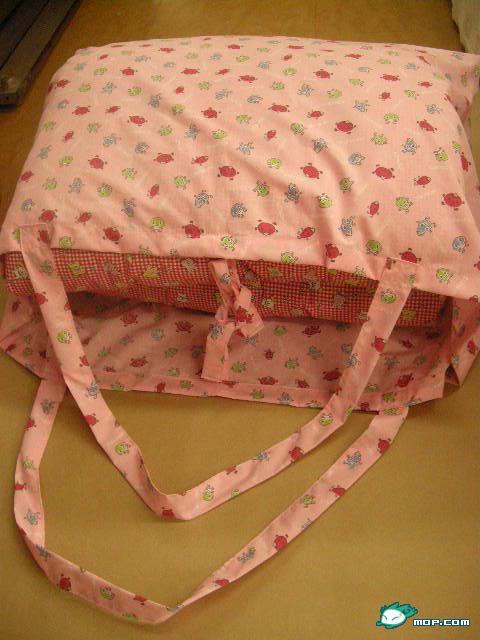
Blanket Bag
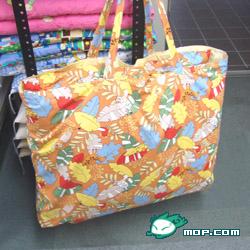
Clothes bag
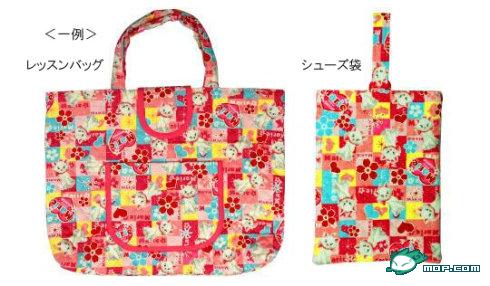
Book bag (left) and shoe bag
After two years we’re used to it,
and the kids become very good at putting things in their right place. I
often think that the reason that the people of Kyoto don’t mind sorting
their rubbish might be because they’ve been taught this kind of thing
from a young age.
2. All These Bags Carried by Children, While Adults Carry Nothing.
This is a sight that really shocked
me: when dropping kids off or picking them up, I noticed that the other
Japanese adults, be they mother, father, or grandparent, were carrying
absolutely nothing, while all those bags of different sizes (at the very
least two or three) mentioned above were carried by those little
cuties. What’s more, they were running really fast!
But us? Maybe out of habit, maybe
because of a cultural thing, but I carried the bags, and Tiantian
carried nothing. A couple of days later the teacher came and had a chat
with me: “Tiantian’s mother, Tina does everything herself at school…”
Japanese people have a habit of saying only the beginning of a sentence,
and letting you work out the rest yourself. I immediately realized that
she was asking about the situation at home, but seeing me thinking it
over, the teacher continued, “… carrying her schoolbag for example …”
After this tactful reminder, I let Tiantian carry her own schoolbag.
When the time came for a parents’
meeting, I told everyone that in China the custom was for parents to
carry everything. It was the Japanese mothers’ turn to be dumbfounded.
As one, they asked: “Why?”
Why? Is it because we Chinese love our children a little more?
3. Changing Clothes Over and Over Again
Tiantian’s kindergarten has its own
uniform; when she arrives she has to take it off, and change into
overalls for playtime. She has to take off her shoes and put on white
ballet shoes, when she goes into the exercise yard she has to change her
shoes again. After their afternoon nap the kids have to change clothes
again. A real pain.
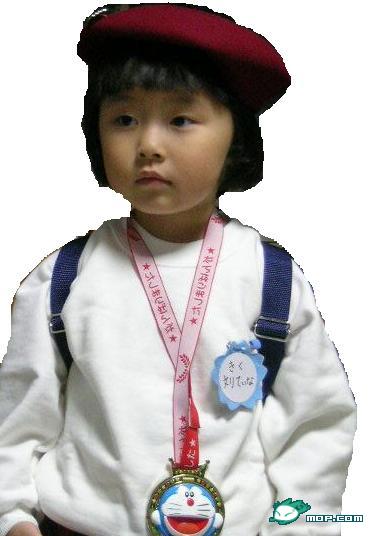
When Tiantian was in Chrysanthemum
Class she used to be so slow changing clothes, and I couldn’t help but
give her a hand. But I soon noticed that all of the Japanese mothers
were standing to one side, not helping at all. I slowly saw that this
business of changing clothes educated the children in living
independently. Through things like their experiences at school,
changing, sticking their daily sticker, and hanging their handkerchiefs,
these kids start from when they are two or three years old to learn the
habit of keeping things orderly.
4. Wearing Shorts In Winter
Children in Japanese schools wear
shorts in winter, no matter how cold it is. My daughter’s grandparents
in Beijing were very worried, and said that I had to talk to the teacher
about it, because Chinese children can’t stand the cold.
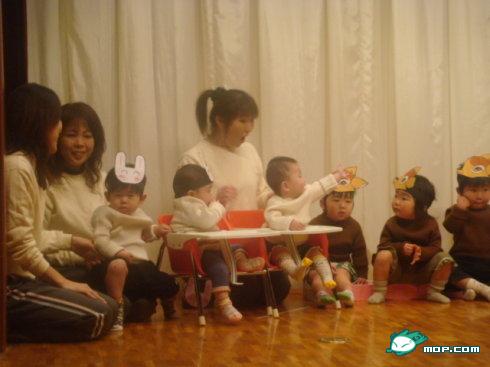
Wouldn’t you know it, when we had
just started kindergarten, practically every day she got sick. But when I
talked to the Japanese mothers about it, their answer amazed me. “Of
course! The reason we send our kids to kindergarten is to get sick.”
Seeing the healthy energy of the
children charging about like little rockets, greeting me, it occurred to
me that we shouldn’t spoil our kids too much.
5. 0-Year-Old Infants Competing in Athletic Events
All classes are named after
flowers. Tiantian was a chrysanthemum, then a lily, now she’s one of the
“older sisters”, a violet. But the little babies who haven’t reached
their first birthdays are all in the “Peach Blossom” class. In Japanese
they’re called もも, which sounds like 毛毛 in Chinese [and 'mo-mo' in
English]. Japanese kana all come from Chinese characters.
These mo-mo, who haven’t
even reached their first birthday, have not only already started going
to kindergarten, but take part in all of their major activities, like
sports competitions and performances. Seeing these little mo-mo crying while crawling forward, I usually feel bad for them.
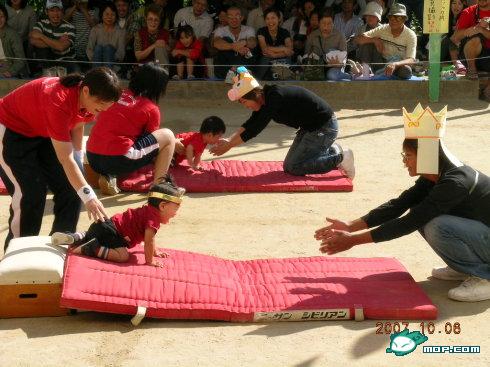
6. Girls Playing Soccer
When children reach their middle
year of kindergarten in Japan, they start taking weekly “Jumping”
lessons, similar to our Physical Exercise lessons back home; when they
get to their senior year, there is a soccer competition. When they’re
not practicing their drumming all day, they’re practicing soccer. And
they really play too, they even have competitions with other
kindergartens. Tiantian has bruises from playing but her strength and
bravery have been brought out.

To tell the truth, when we first
came to Japan, Tiantian’s performance was really shameful. Japanese kids
usually start shooting up at about three or four years old, before that
they are a lot shorter than Chinese kids. In Tiantian’s class she was a
giant, but was in actual fact quite weak. The Japanese kids would run
about outside, but Tiantian? She’d get a grain of sand in her shoe and
would have to tiptoe to walk. Once there was an excursion where they
went up a mountain, and she could only come down with two short Japanese
kids supporting her. These uncomplaining three-year-olds, who didn’t
have the experience of allowing her to travel on foot up a mountain for
an hour. She’s better now, last year at Shangrila, in that low oxygen
environment she walked for four hours without any problems.
7. Mixed Education
When we were in China I saw
Tiantian’s kindergarten a few times. Each class would have its classes
separately, but in Japan this isn’t the case.
Before 9:30, and after 3:30, the
entire school plays together. And in the yard big kids hold little kids,
little kids chase big kids, they carry on like crazy. They get to
really experience having “siblings”. Their feeling of growth is obvious.
For example in Tiantian’s and the
other senior year’s last assembly a few days ago, after performing their
taiko piece, they said something that made all the parents cry.
“In today’s assembly we’re very
happy, because the children from lower years performed so successfully.
This is our last assembly, and when we start junior school we’ll be sure
to remember our friends and our kindergarten.”
8. Education: All “Smiles” and “Thank you”.
In this kindergarten, it seems like
they don’t care at all about the children’s intellectual education.
They don’t have textbooks, just a new sketchbook every month. In the
school’s education plan, there aren’t any subjects like mathematics,
kana, art, or music. Don’t even ask about English or the International
Math Olympiad. They don’t learn roller skating or swimming.
When you ask what they teach, you’d never guess what the answer is: “We teach the children to be all smiles!”
In Japan, no matter where you are,
or to who you’re talking to, “being all smiles” is most important. An
girl who is “all smiles” is most beautiful.
What else do they teach? — They teach children to “say thank you”.
In everything there are things that
they stress here that they don’t in China. But after three years I can
see that Tiantian has improved in things like music, art and reading,
and these improvements are from a comprehensive education.
9. The Number Of Activities
Looking at my calendar I can see
the days when I need to make lunch for Tiantian to take to school.
These are the days when she has excursions. I can’t count how many
times she climbs mountains, how many lakes she’s seen, or how many
animals or plants she’s gone and looked at.
Apart from that, she’s also
gathered acorns, made cakes, been to sports carnivals, performed for
community events, had sleepovers, celebrated festivals, been at
assemblies, attended temples, exhibitions… let’s just say that there
have been a lot.
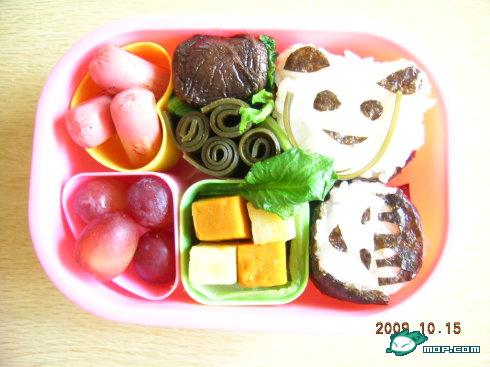
10. All The Holidays Chinese People Don’t Celebrate — – Japanese Kindergarten Celebrate
This really floored me too. Like I
mentioned above, Japanese kindergartens celebrate their own traditional
holidays, Girls’ Day, Boys’ Day, Hungry Ghost Festival…. Not only this,
they also celebrate Renri (held on the 7th night of the lunar new
year, how many of you know about this festival?), and Qixi.
Today she came back, and said
“Today, teacher asked how we celebrated these holidays in China, I said I
didn’t know”. What a disgrace! Mommy doesn’t know either.
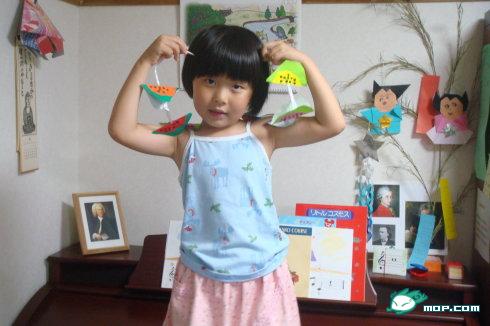
11. Teachers’ Abilities
In one Japanese class there are ten
to thirty students, but only one teacher. In the beginning I had my
doubts, if she was able to keep her eye on all of them she’d be pretty
good. Then I found out that I had underestimated these Japanese
kindergarten teachers. With just this one teacher, thirty children’s
artworks, the lead for their drumming pieces (so professional), thirty
children’s art, music, reading, thirty children’s birthdays, their major
assemblies and sports carnivals are all organised methodically and
thoroughly.
Look at the teacher, and she’s always cool and relaxed. And she’s about 50-years-old! I salute her!
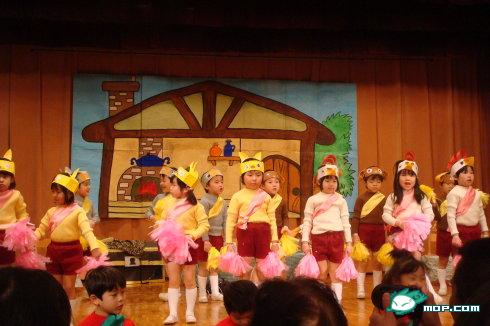
12. Buddhist Influences
Kyoto has probably more temples
than any other city in Japan, it has a kind of monastic ambiance.
Tiantian has to go to temple every week for instruction. In the most
important festivals she has to bow to Buddha, and there are activities
on every Buddha’s Birthday and Nirvana day.
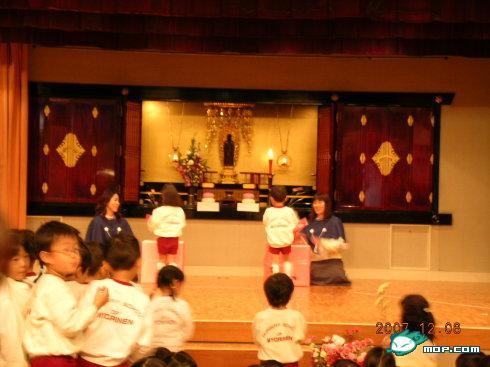
Tiantian is graduating soon,
yesterday she went to Nishi Honganji temple to make a wish. Tiantian was
the class representative and gave Buddha some flowers. I asked her what
she wished, and she said “To always trust in Buddha, to always treat
others with a thankful heart, and to always heed others’ words.”
mmmm..
ReplyDeletekalau ciksu pon suka yang no 1 buat beg tu.cayalah
berpinar2 mata I baca, and am happy to read it. just for sharing since I malas nak tulis2 entry hehehe actually cara dorang ni almost 80% same with here. Kat sini we parents still tolong the kids bawa bag dukung lagi kadang2 budak ni, and also changing their clothes pun kami banyak tolong, tapi dorang ni kalau parents takder, pandai buat sendiri tau.
ReplyDeleteAlso, kalau tengok kat playground dorang, baby yg baru merangkak tu semua main dalam pasir biasa jer, explore kata depa. And kalau setakat demam sikit2 or ujan sikit2, pun depa redah keluar main. nak bagi kuat immune sistem kekdahnya. Owh Japan ni mmg terkenal dengan disiplin pun kan, tren dornag pun gerak tepat2, not one second late. German ada jugak seminit dua lewat kadang2. Tapi comel tau tengok budak2 ni beratur cuci tangan and ada towel masing2 siap ada gambar, kena letak balik not simply buang merata. Cukup panjang tak ulasan I ni, kata malas nak buat entry sendiri hehehe.
Seksanya nak hidup...
ReplyDeletePatutlsh kat jepun byk kes bunuh diri...
Sebab tu lah Jepun maju, mereka berani berubah dan berani berfikir di luar kotak...
ReplyDeletepenat membaca walaupun baca dalam hati,maklumlah dalam BI...hehehe,saya dulu waktu kat Jepun tak tau pulak tadika dia camni,sebab saya tak g tadika...hehehehe...memang tegas dan berdisplin ni...
ReplyDeleteSori lyd,full story tak sempat nak baca since suntuk masa wpun teringin nak baca..anyway dah agak daa mesti bkn calang2sekolah tuh..kalau dlm islam pun umur anak2 tadika tuh usia tuk bermain2..bila dah reach 7 baru mula belajar...tp kita kan sll nak advance..
ReplyDeleteinfo menarik yag dikongsi ni Lyd. mungkin boleh dipraktikkan di mesia juga!
ReplyDeletePeh!!! Betul teaser yg saspen. Syllabus yg tak byk pelajaran. Menarik perhatian sdgkan kat Malaysia ni, lebih menekan pd exam oriented. Mmmm...
ReplyDeleteCissss...kat japang rupanya. Wakenabeb ☺☺
ReplyDeletebila baca part 1 ngan 2 nih, aku faham la kot sket2. mgkn ini cara diorang didik anak2. utk diorang, mgkn tu sumer perkara biasa. tp bg kita, akan jd culture shock.
ReplyDeleteRata-rata komen daripada pembaca menolak untuk punya tadika seperti itu di Malaysia..cuba baca blog yatiechomeyl.blogspot.com...cari topic nursery in Japan..
ReplyDeleteApakah pendapat anda pula?
Pendapat saya, saya memang setuju dgn sistem pendidikan yg Jepun amalkan ini. Kalau ada kat Malaysia dan saya mampu bayar, insyaAllah saya akan htr anak saya juga.
Delete